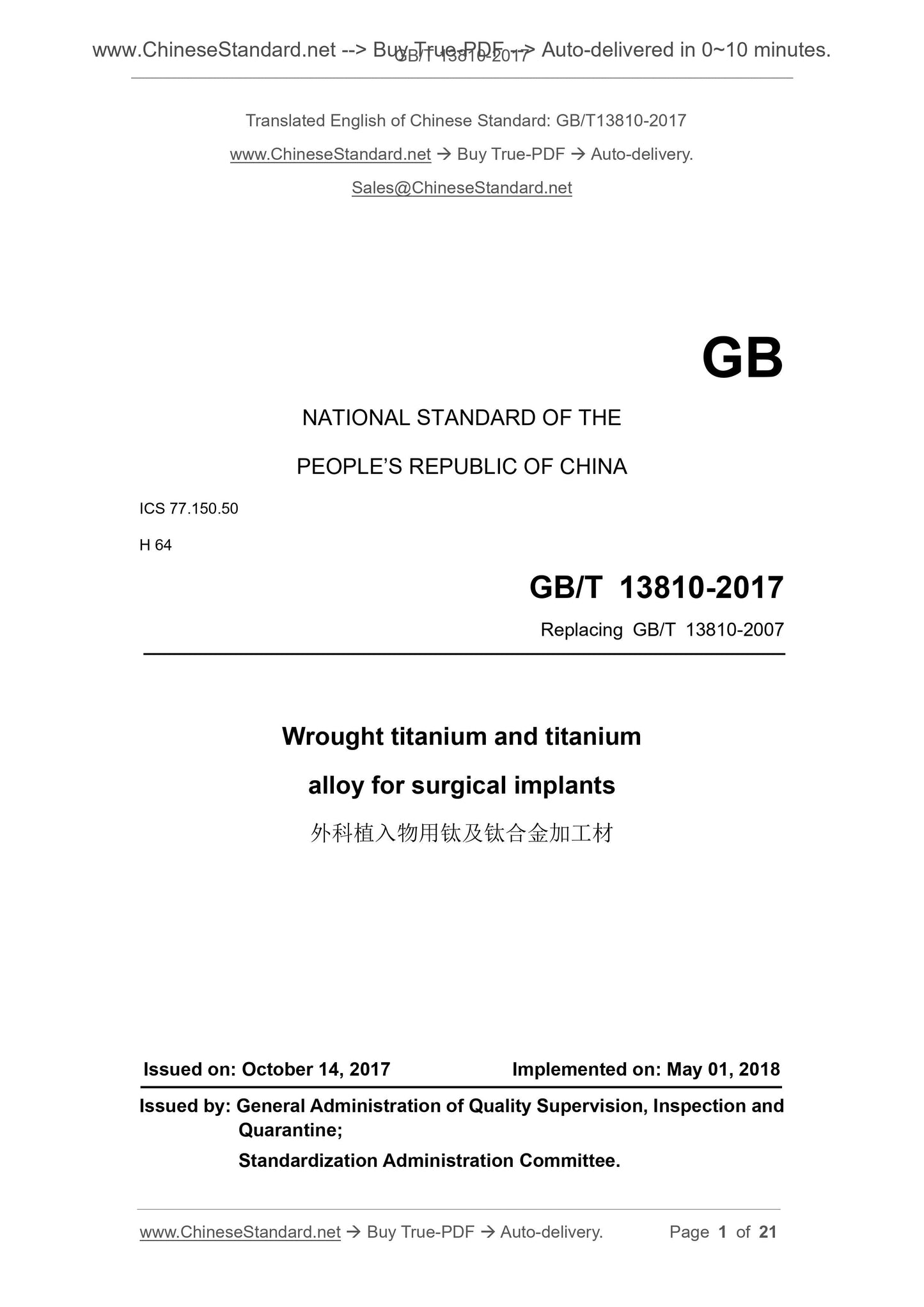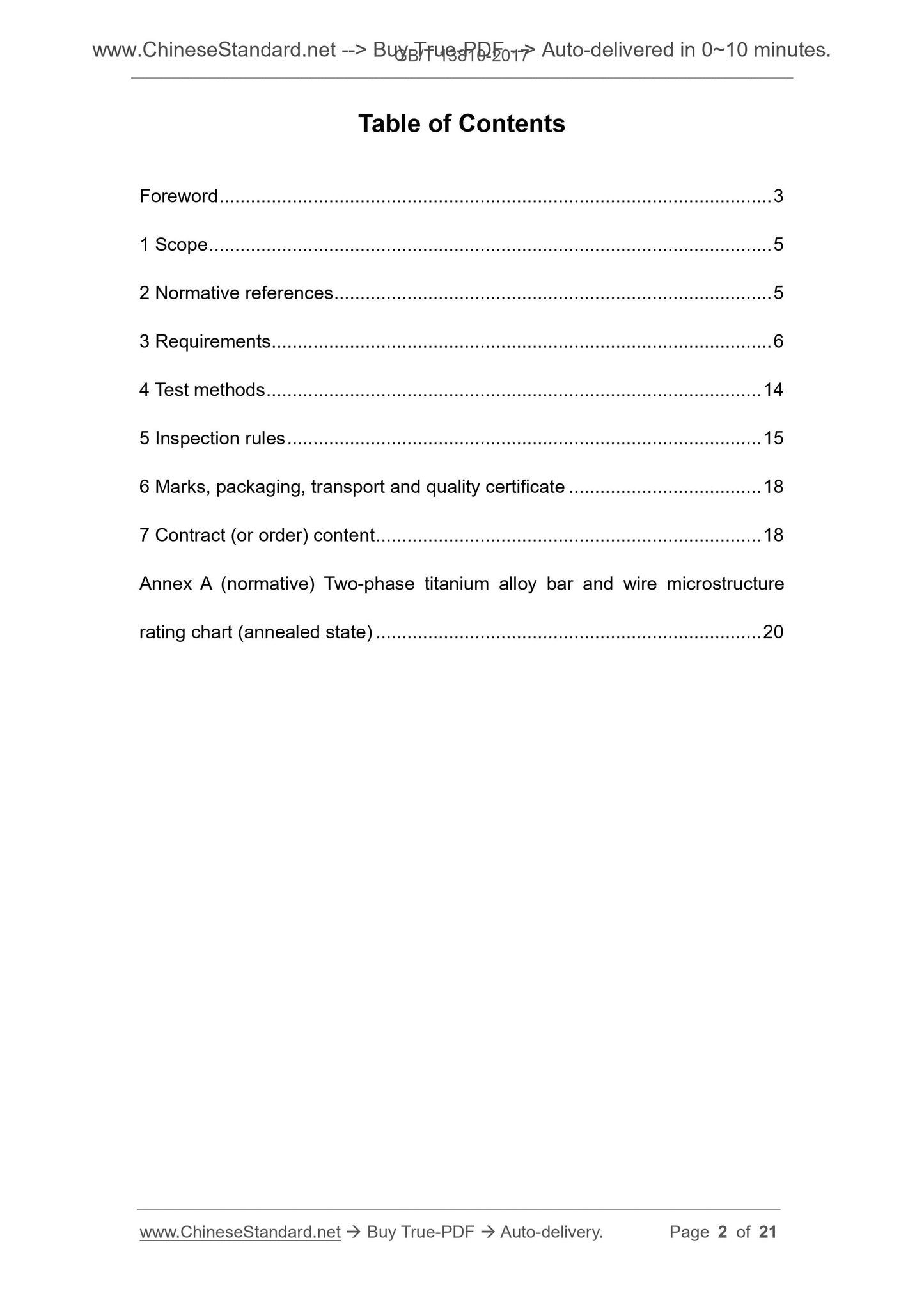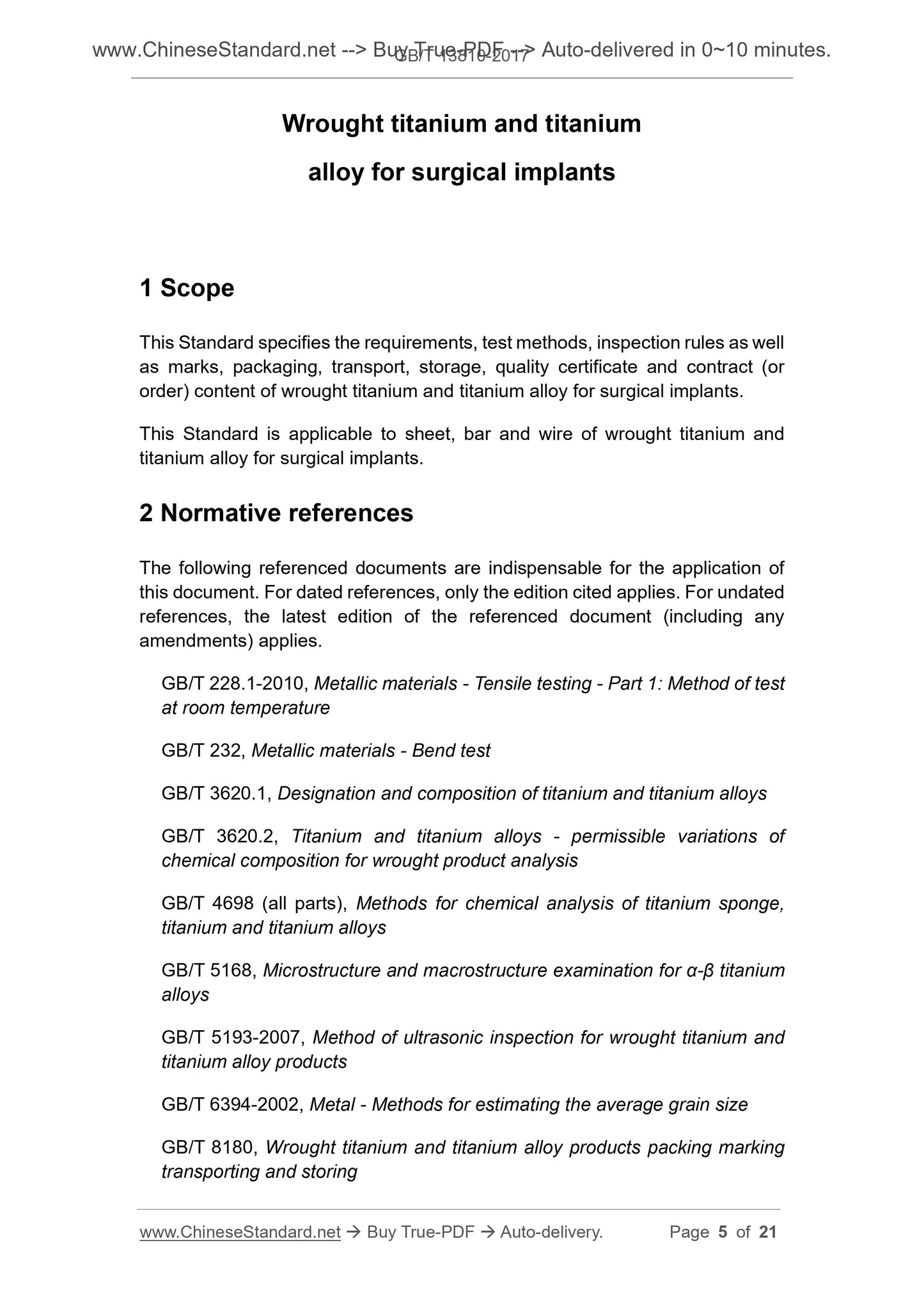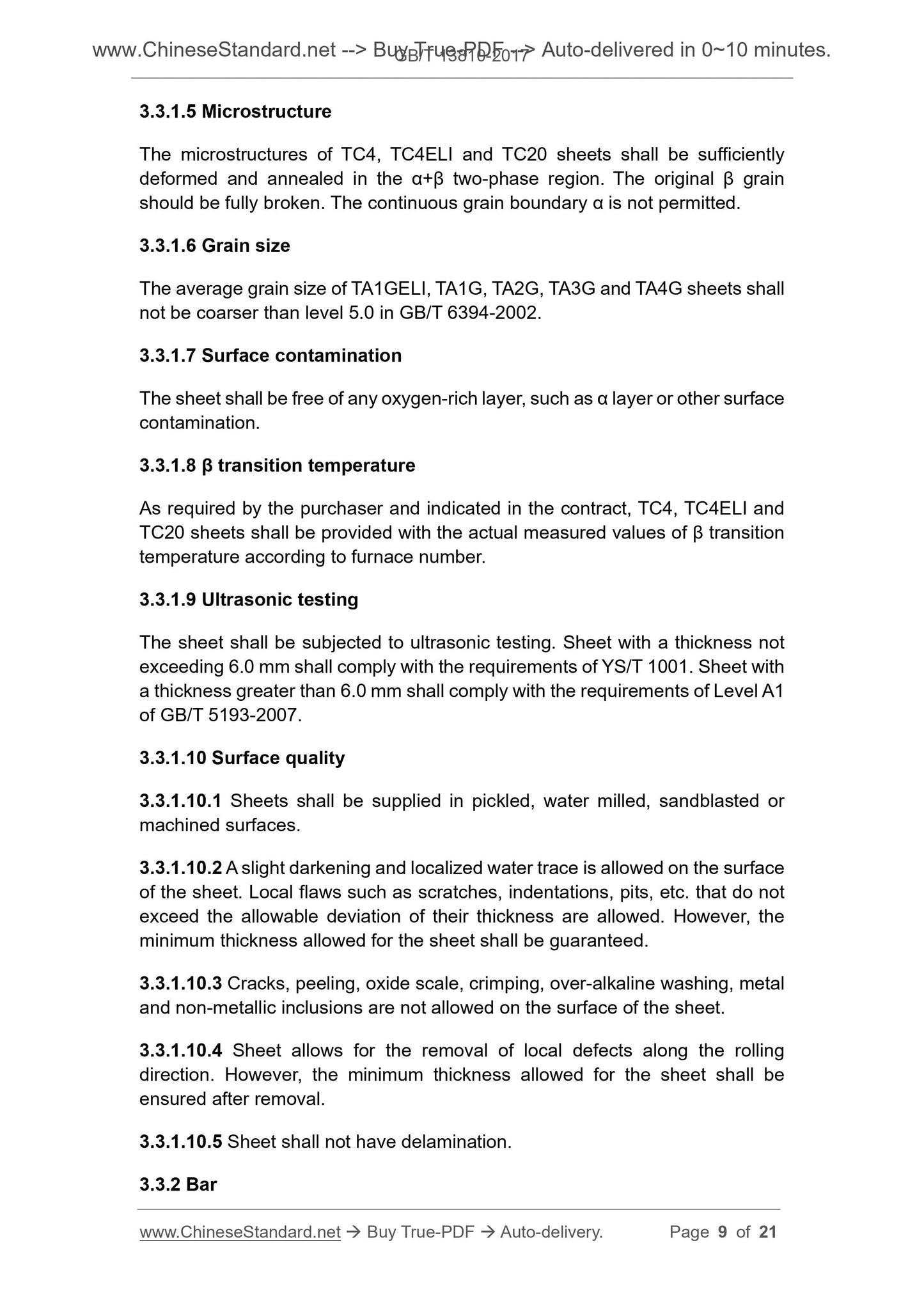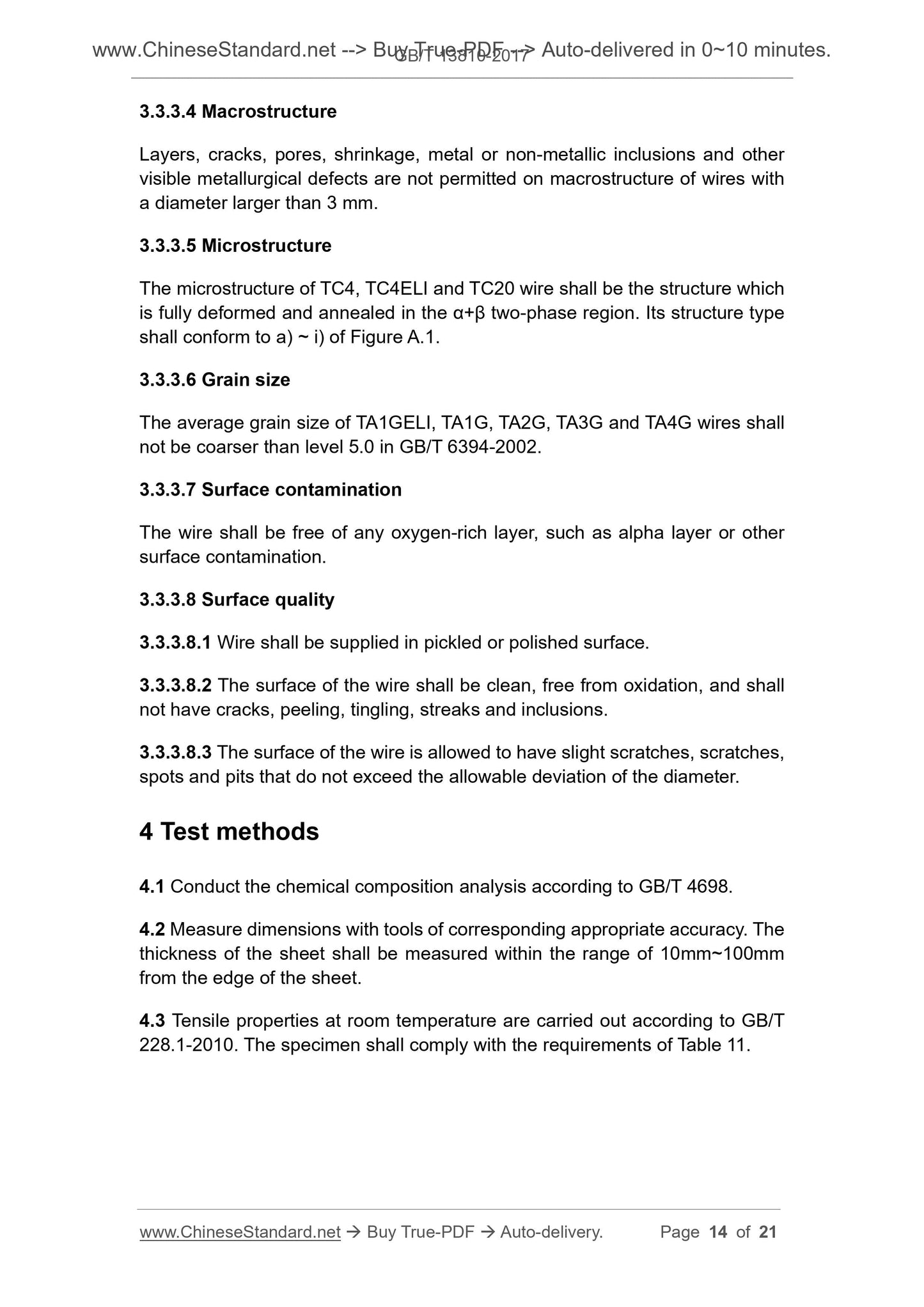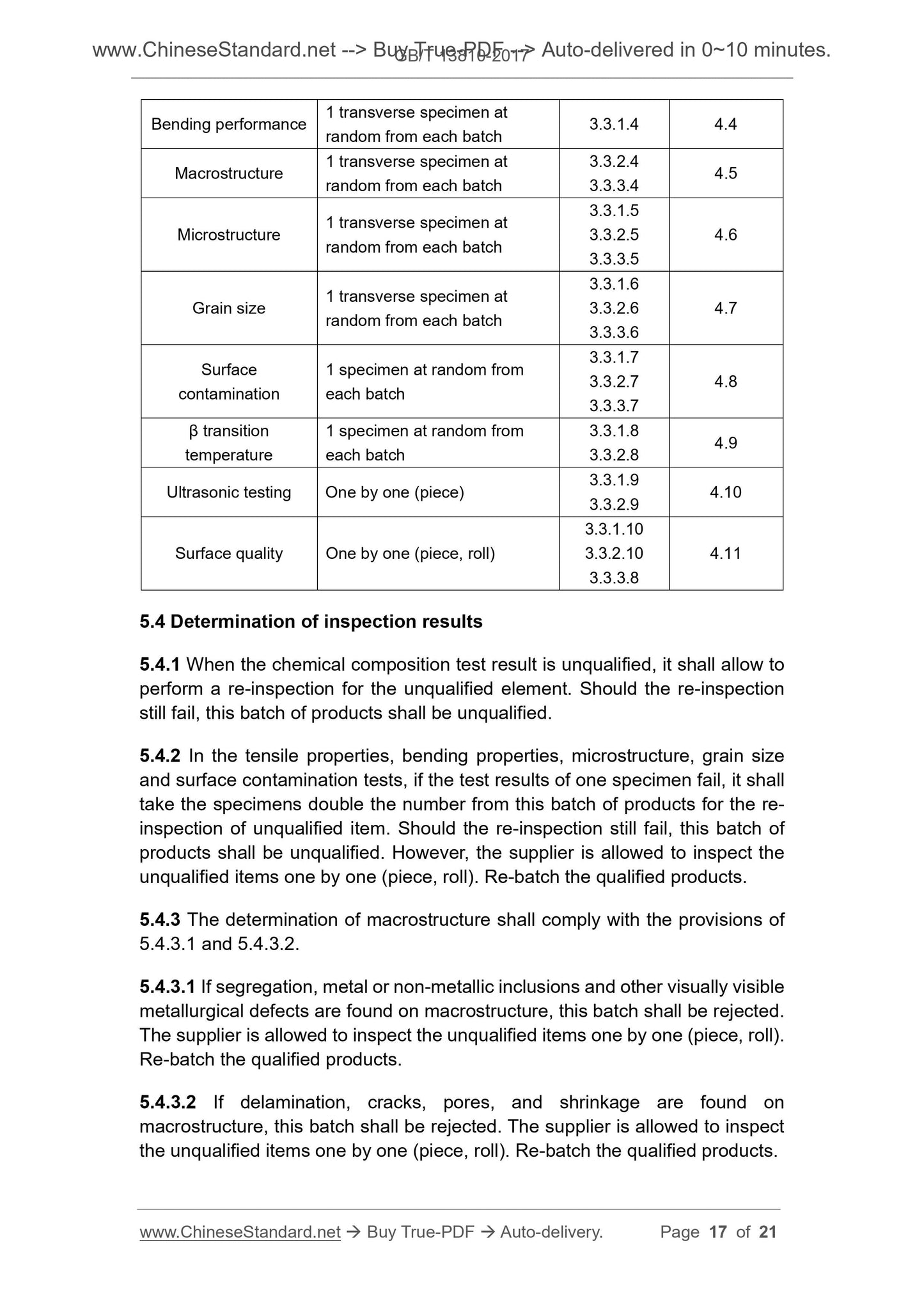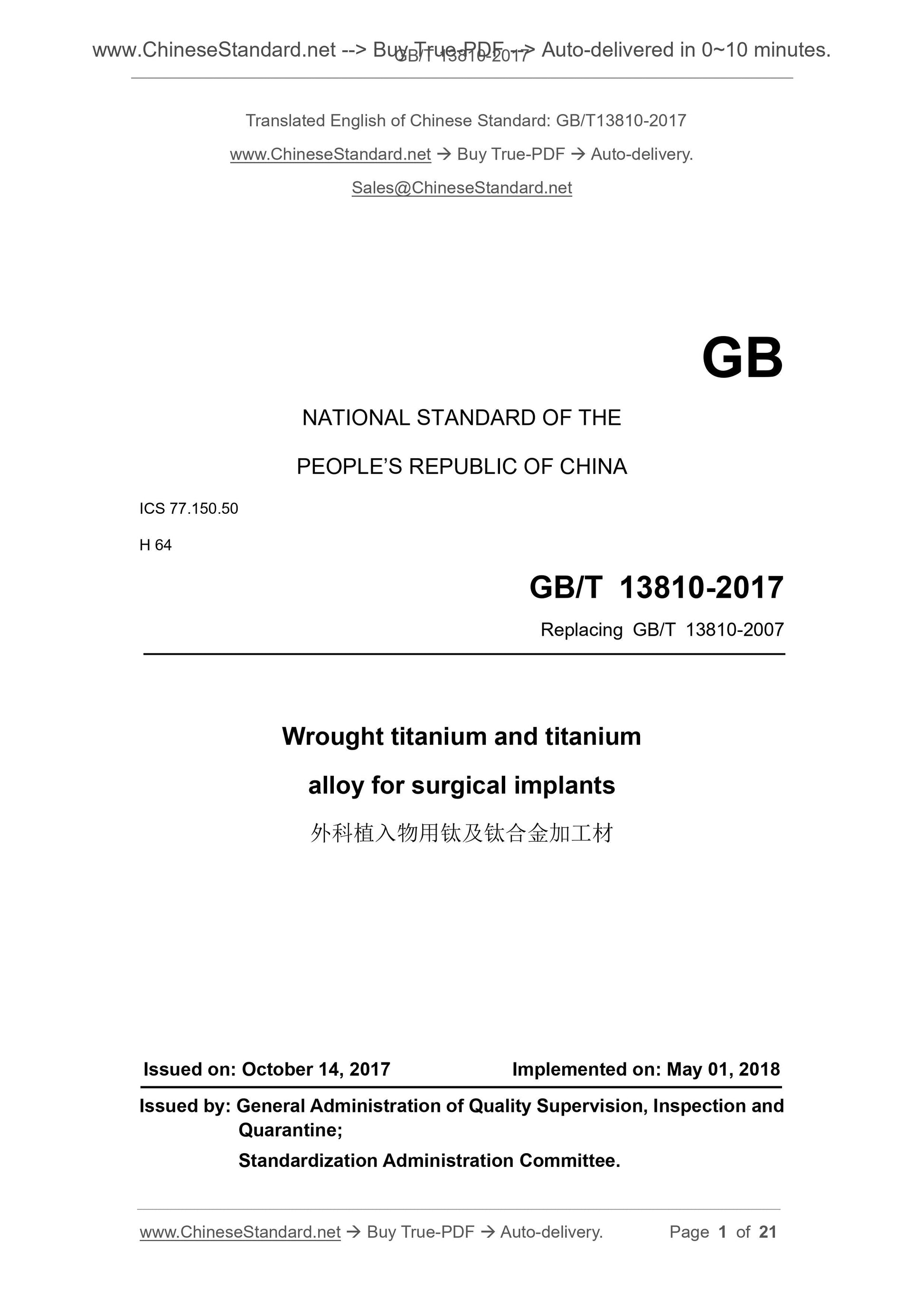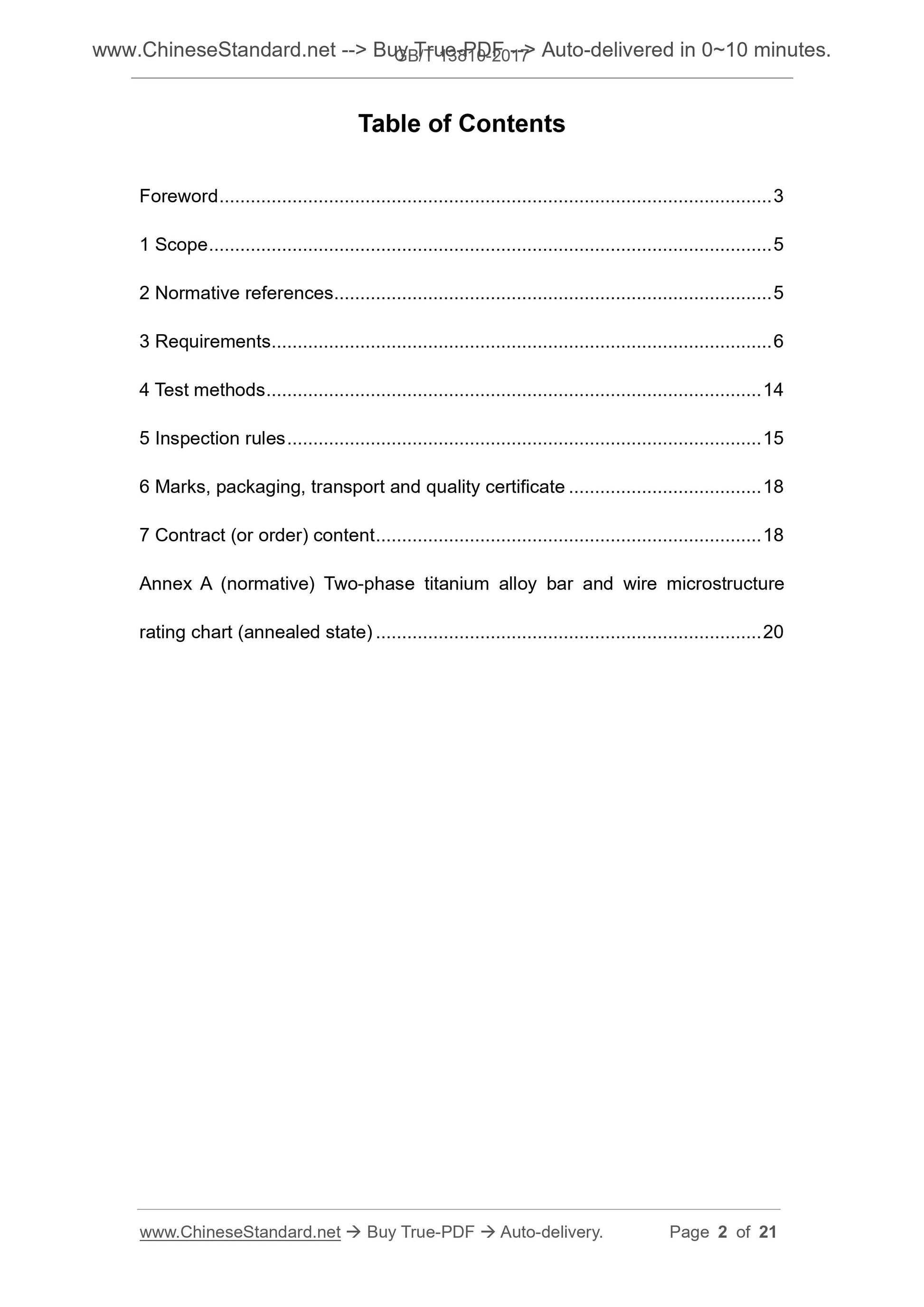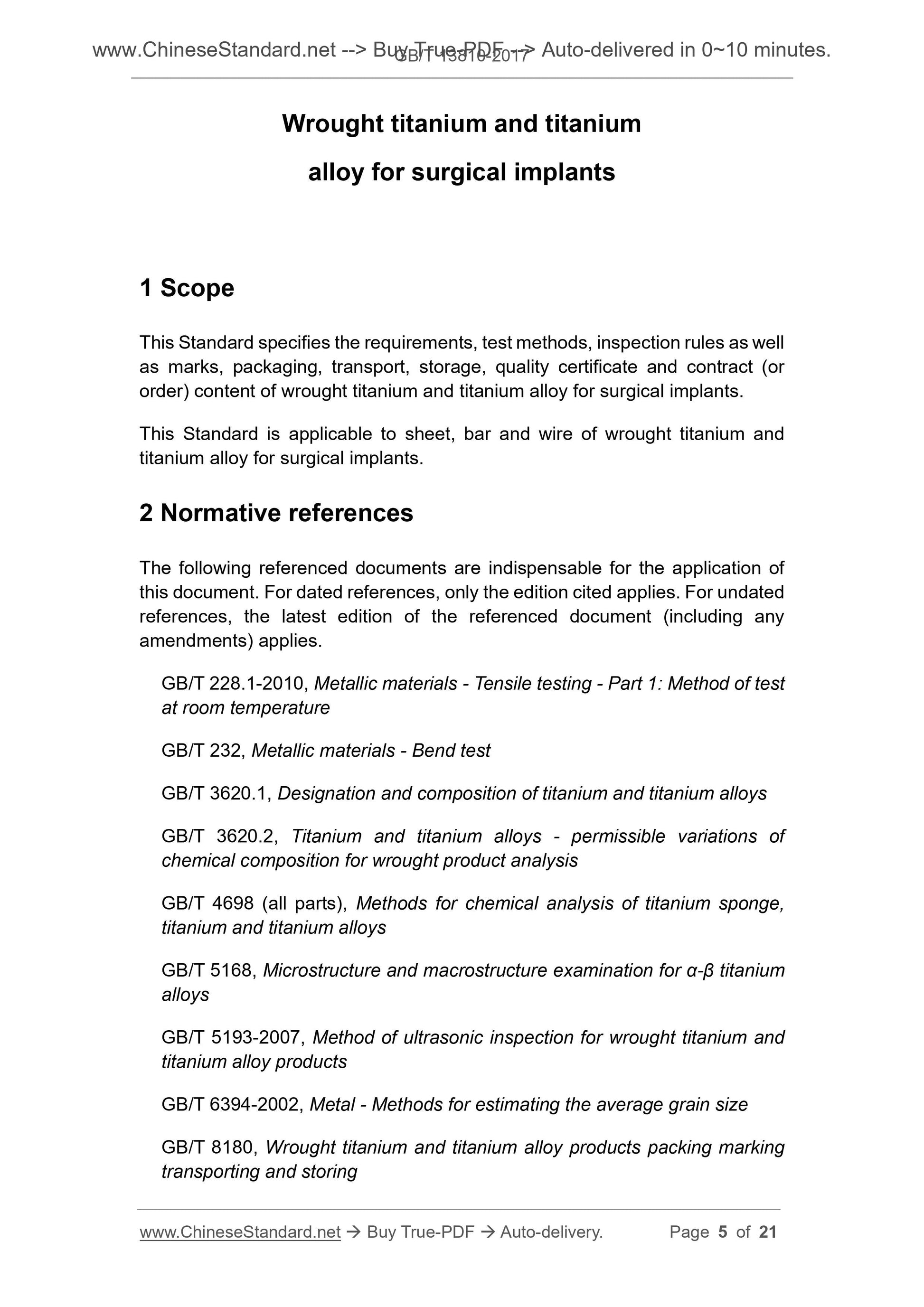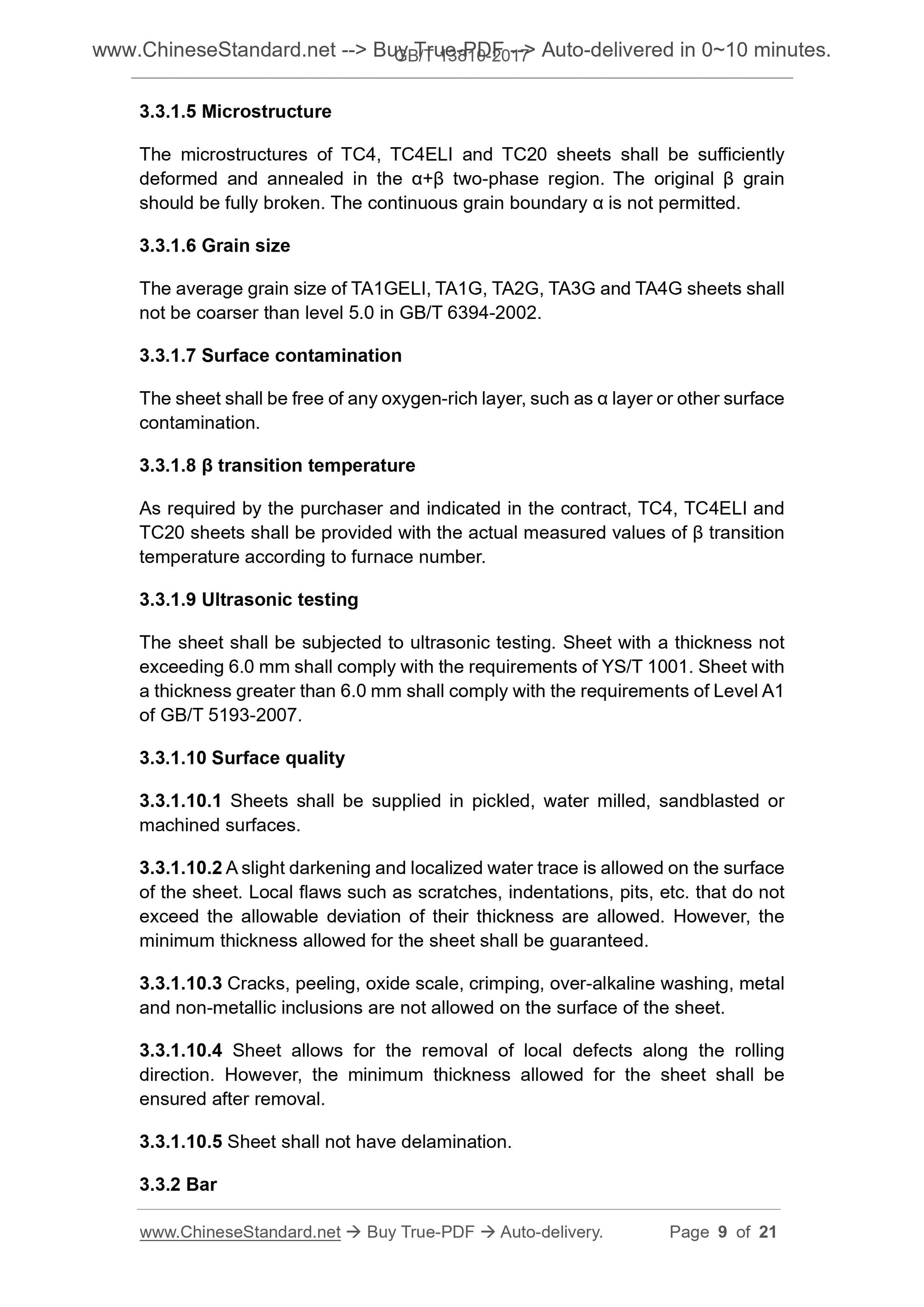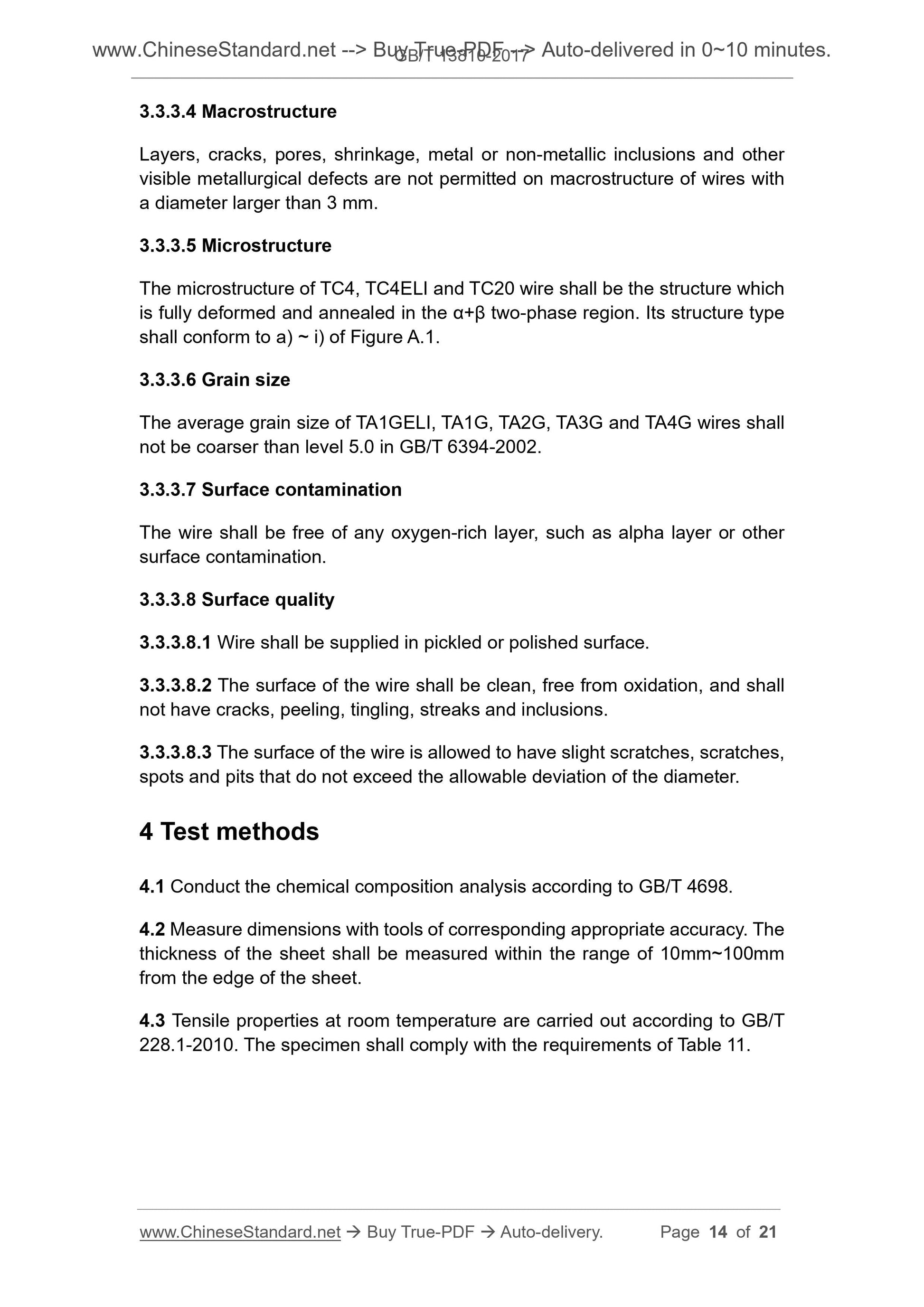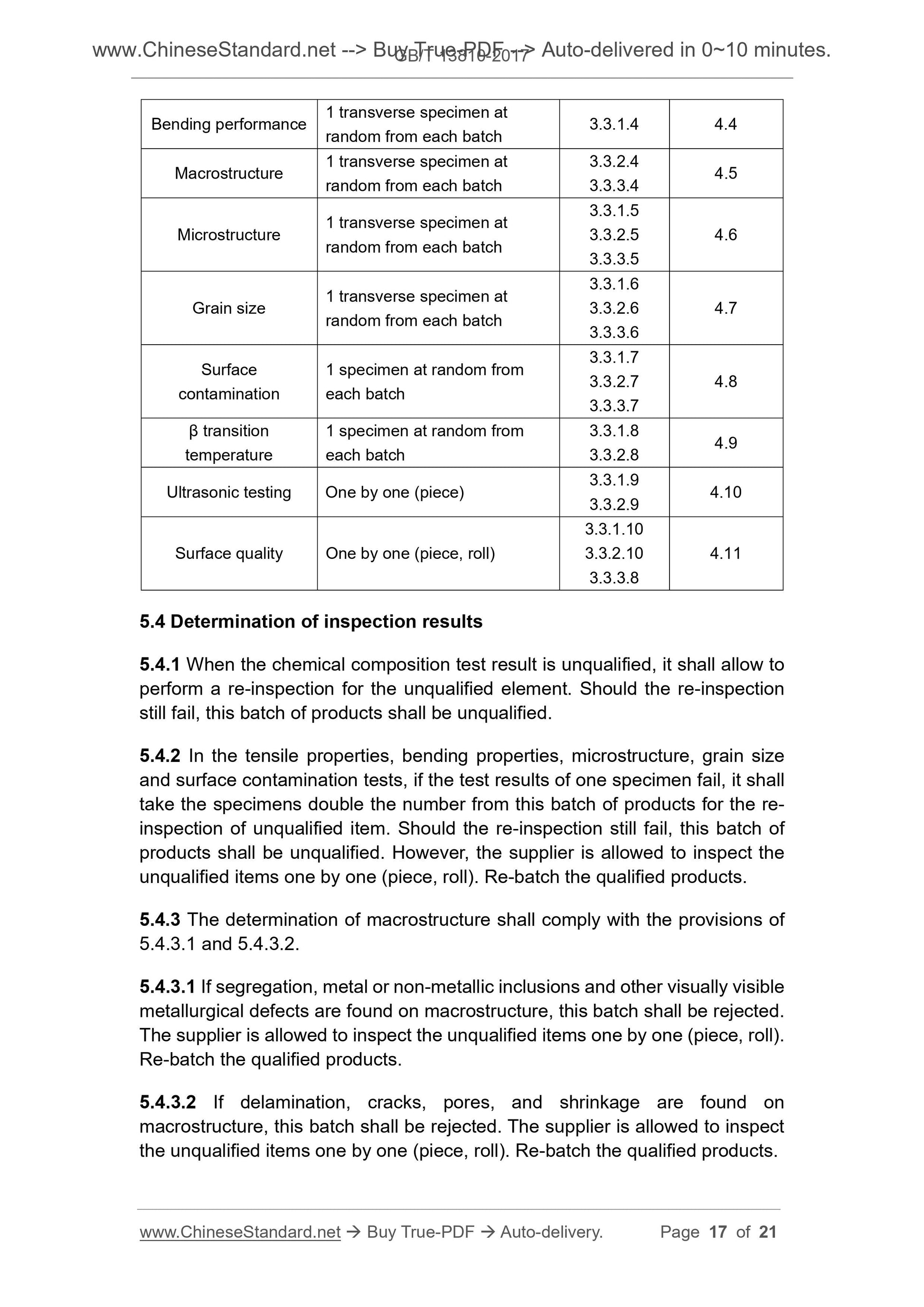1
/
of
6
www.ChineseStandard.us -- Field Test Asia Pte. Ltd.
GB/T 13810-2017 English PDF (GB/T13810-2017)
GB/T 13810-2017 English PDF (GB/T13810-2017)
Regular price
$145.00
Regular price
Sale price
$145.00
Unit price
/
per
Shipping calculated at checkout.
Couldn't load pickup availability
GB/T 13810-2017: Wrought titanium and titanium alloy for surgical implants
Delivery: 9 seconds. Download (and Email) true-PDF + Invoice.Get Quotation: Click GB/T 13810-2017 (Self-service in 1-minute)
Newer / historical versions: GB/T 13810-2017
Preview True-PDF
Scope
This Standard specifies the requirements, test methods, inspection rules as wellas marks, packaging, transport, storage, quality certificate and contract (or
order) content of wrought titanium and titanium alloy for surgical implants.
This Standard is applicable to sheet, bar and wire of wrought titanium and
titanium alloy for surgical implants.
Basic Data
| Standard ID | GB/T 13810-2017 (GB/T13810-2017) |
| Description (Translated English) | Wrought titanium and titanium alloy for surgical implants |
| Sector / Industry | National Standard (Recommended) |
| Classification of Chinese Standard | H64 |
| Classification of International Standard | 77.150.50 |
| Word Count Estimation | 18,192 |
| Date of Issue | 2017-10-14 |
| Date of Implementation | 2018-05-01 |
| Issuing agency(ies) | General Administration of Quality Supervision, Inspection and Quarantine of the People's Republic of China, Standardization Administration of the People's Republic of China |
Share
